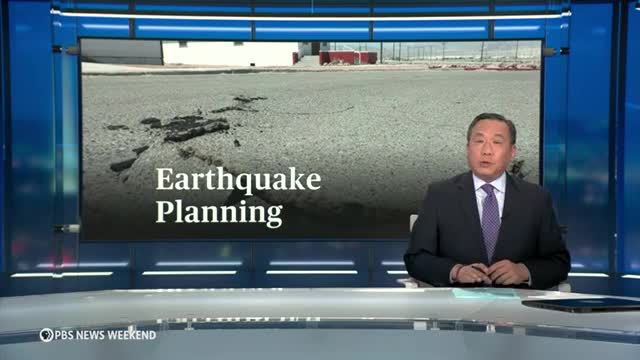Scientists warn of potential catastrophic quake in Los Angeles
This article was created by AI summarizing key points discussed. AI makes mistakes, so for full details and context, please refer to the video of the full meeting. Please report any errors so we can fix them. Report an error »

A recent 4.4 magnitude earthquake in Los Angeles has reignited concerns about earthquake preparedness in Southern California, particularly as it occurred along a fault line capable of producing a much more powerful 7.5 magnitude quake. While this tremor caused minimal damage, scientists emphasize the potential risks associated with such seismic activity in densely populated areas.
Historically, California has faced significant earthquake challenges. The devastating 6.9 magnitude quake that struck the San Francisco Bay Area on October 17, 1989, serves as a stark reminder of the potential consequences. This earthquake resulted in the collapse of elevated highways, the evacuation of Candlestick Park, and the postponement of the World Series. The disaster claimed 63 lives and caused over $6 billion in damages.
Another notable event occurred on February 9, 1971, when a 6.6 magnitude earthquake hit California's San Fernando Valley, leading to a state of emergency. This quake resulted in 65 fatalities, including victims from the partial collapse of a veterans administration hospital, with damages estimated at $500 million.
While California remains at the forefront of earthquake discussions, the historical context of seismic events extends beyond the West Coast. A lesser-known but significant series of earthquakes occurred between late 1811 and early 1812 near New Madrid, Missouri. This sequence of quakes, starting with an estimated magnitude of 7.5, profoundly impacted the region and serves as a reminder that seismic risks are not confined to traditional earthquake zones.
As discussions about preparedness continue, the recent tremor underscores the importance of readiness for potential future seismic events across the country.
Historically, California has faced significant earthquake challenges. The devastating 6.9 magnitude quake that struck the San Francisco Bay Area on October 17, 1989, serves as a stark reminder of the potential consequences. This earthquake resulted in the collapse of elevated highways, the evacuation of Candlestick Park, and the postponement of the World Series. The disaster claimed 63 lives and caused over $6 billion in damages.
Another notable event occurred on February 9, 1971, when a 6.6 magnitude earthquake hit California's San Fernando Valley, leading to a state of emergency. This quake resulted in 65 fatalities, including victims from the partial collapse of a veterans administration hospital, with damages estimated at $500 million.
While California remains at the forefront of earthquake discussions, the historical context of seismic events extends beyond the West Coast. A lesser-known but significant series of earthquakes occurred between late 1811 and early 1812 near New Madrid, Missouri. This sequence of quakes, starting with an estimated magnitude of 7.5, profoundly impacted the region and serves as a reminder that seismic risks are not confined to traditional earthquake zones.
As discussions about preparedness continue, the recent tremor underscores the importance of readiness for potential future seismic events across the country.
View full meeting
This article is based on a recent meeting—watch the full video and explore the complete transcript for deeper insights into the discussion.
View full meeting